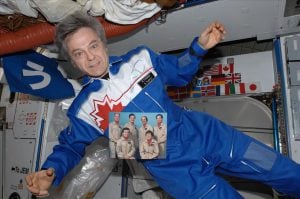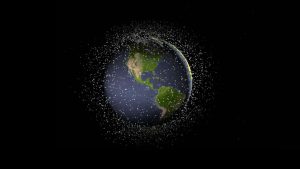
Exploration
Canadian Space Agency astronaut profiles
The men and women that have become part of Canada’s space team
- 1067 words
- 5 minutes
Science & Tech
A cosmic deep dive, these photographs are the deepest and sharpest full-colour images of the universe yet

Thanks to NASA’s James Webb Space Telescope, humans can now catch a glimpse of galaxies far, far away.
In a series of five images released July 12, the James Webb Space Telescope has captured humanity’s journey of discovery through galactic history with stunning new views of the universe. These first-of-their-kind images show stars and galaxies that appeared 13 billion years ago, capturing viewers’ attention across the globe.
Launched into space in December 2021, Webb is a feat of human ingenuity that has been developed over two decades with contributions from thousands of scientists, engineers and other professionals from more than 14 countries — including Canada — and 29 U.S. states. As NASA’s newest premier space science observatory, Webb is destined to become a household name as it has been designed to alter our understanding of the universe, just like its predecessor, Hubble, before it. Webb is able to observe cosmos, planets, stars and nebulas, well into galaxies beyond the realm of what we know. This will help scientists understand the distant universe while also uncovering secrets of exoplanets (a planet beyond our solar system) closer to home.
As the largest and most powerful space science telescope ever built, Webb is transforming how we think about the night sky and our place in the universe. Meticulously designed — including Canadian components — Webb will peer back into a time when the universe was young to search for the first galaxies in the universe. Weighing approximately 13,700 lbs, Webb is so sensitive that NASA states it could theoretically detect the heat of a signature bumble at the distance of the moon.
Contrasting against the deep blackness of space, these first images display a kaleidoscope of galaxies amidst stars and cosmos creating a breathtaking look at life beyond earth.

The deepest image of the universe yet, this first glimpse of what Webb can do shows galaxy cluster SMACS 0723 as it appeared 4.6 billion years ago. Approximately the size of a grain of sand held at arm’s length, Webb’s image portrays only a small sliver of the vast universe. Taken by Webb’s Near-Infrared Camera (NIRCAM) this composite image is made from images at different wavelengths, totalling 12.5 hours of observation time — the Hubble Space Telescope took weeks. These tiny, faint structures have never been seen by humans before but were made possible by Webb’s NIRCam’s sharp focus. Taking billions of years to reach us, light from these galaxies creates a captivating image that includes star clusters and diffuse features.

As one of more than 5,000 confirmed exoplanets in the Milky Way, WASP – 96 b is located roughly 1,150 light-years away in the southern-sky constellation, Phoenix. According to NASA, this exoplanet has a mass less than half that of Jupiter and diameter 1.2 times greater. Webb’s Near-Infrared Imager and Slitless Spectrograph (NIRISS), a Canadian-made instrument, measured light from the WASP-96 system for 6.4 hours as it moved across the star. The contribution of the NIRISS is one of two important elements that the Canadian Space Agency had on the James Webb Space Telescope. The measuring of light from the NIRISS resulted in the light curve captured by this image, which displays the overall dimming of starlight during its movement. It also displays a transmission spectrum revealing the brightness change of individual wavelengths of infrared light. The spectrum of WASP-96 b captured by NIRISS covers a wide range of wavelengths that includes visible red light and a portion of the spectrum that NASA states have not previously been accessible from other telescopes.

In this image taken with exceptional detail, the Southern Ring Nebula comes into full view. According to NASA, by observing the nebula in mid-infrared wavelengths, Webb has unveiled the second, dusty star at the center of the nebula in more detail. Paired together, these images create a captivating duo of asymmetrical shells that show humans a close-up view of the nebula’s brilliant structures. This image was captured by two cameras aboard Webb and cataloged the Southern Ring Nebula as NGC 3132 which is approximately 2,500 light-years away. One of the nuances of Webb is that it will allow astronomers to investigate the finer details of planetary nebulas, such as the Southern Ring Nebula, with clouds of gas and dust expelled by dying stars. Pictured is the star ejecting shells of material, dust and molecules from within itself? that changes the landscape as the star continues to eject material.

Black holes are a fascination for many and, in this new image, humans are shown never-before-seen details of the galaxy group, Stephen’s Quintet. As Webb’s largest image to date, NASA states this image covers about one-fifth of the Moon’s diameter and contains over 150 million pixels constructed from almost 1,000 separate image files. The information gathered from Webb provides new insight into how galactic interactions may have driven galaxy evolution in the early universe, states NASA. Due to gravitational interactions, sweeping tails of gas and stars are being pulled in different directions creating a whimsical image of galaxies far away. A visual grouping of five galaxies, Stephen’s Quintet shows the merging of galaxies some 290 million light-years away. This image also suggests that there is a supermassive black hole at its centre while also displaying stars being born.

Appearing almost too beautiful to be true, this striking image shows a stellar nursery called NGC 3324 located at the northwest corner of the Carina Nebula. Seemingly three-dimensional, NASA explains how this image of “cosmic cliffs” showcases Webb’s capabilities to peer through obscuring dust and shed new light on how stars form. Young stars are imaged in infrared light, creating a landscape of mountains and valleys made by a glowing wall of gas. NASA states that the “steam” that appears to rise from the “mountains” is composed of hot, ionized gas and hot dust streaming away from the nebula due to the relentless radiation from the stars. Peering through cosmic dust to see these objects is made possible because of Webb’s sensitivity to infrared light.
Are you passionate about Canadian geography?
You can support Canadian Geographic in 3 ways:

Exploration
The men and women that have become part of Canada’s space team

Science & Tech
With help from Canadian scientists, this dark universe hunter aims to study why the universe is expanding at an accelerating rate

Exploration
The significant CSA events since Alouette’s launch

Environment
Michel Doyon, manager of flight and systems operations at the Canadian Space Agency, walks us through what space debris is and its impact on Canada